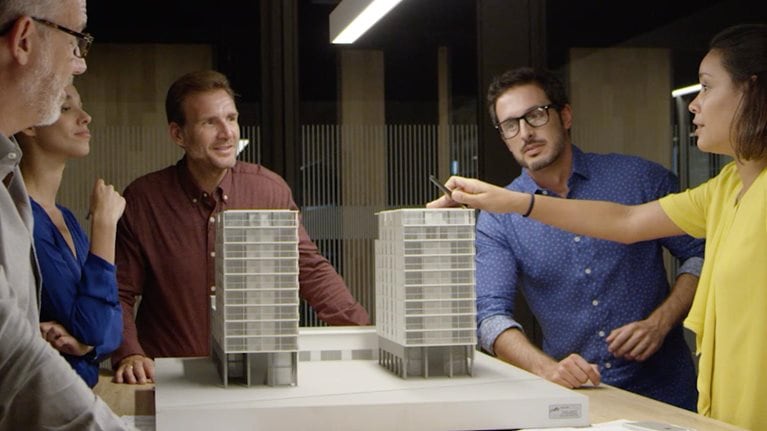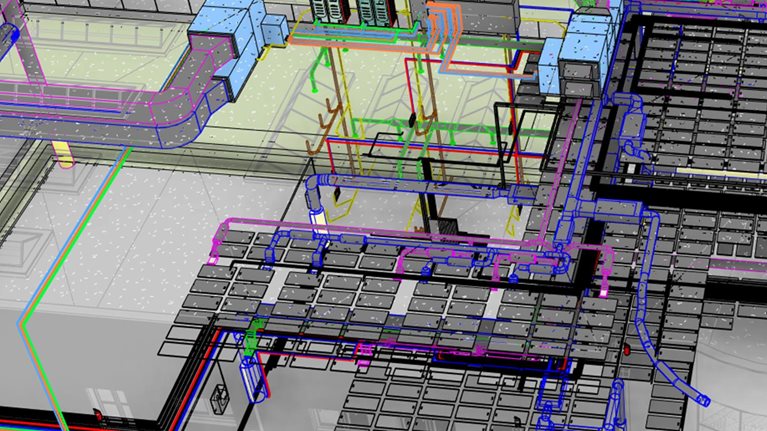Projects 5.0 is a new model for the delivery of large capital projects in heavy industry. In the first of a forthcoming series of publications, we make the case for a radically different approach in the sector, and outline the six fundamental changes that could transform project-delivery performance.
In the last two decades, leading industries have slashed the cost and time of project delivery by changing how they execute projects. The cost of space flight has fallen by 75 percent, for example. Carmakers have accelerated new-model development by more than 30 percent. Leading manufacturers have halved lead times and doubled productivity and factory output.
Applying the same underlying principles to large capital projects in heavy industries could achieve a similar step change in performance, with the potential to reduce actual project cost and time by 30 to 50 percent, more than doubling project returns. Yet the sector has struggled to achieve even moderate rates of productivity improvement or to deliver projects on time; a recent survey of senior project executives found that on average, projects overrun their budgets and schedules by 30 to 45 percent.
The coronavirus crisis has further accelerated the urgency for change. Lockdowns, labor shortages, and supply-chain disruptions have set construction programs back by months. The prospect of a long, uncertain period of recovery is forcing companies to rethink future project plans.
To address these old and new challenges, Project 5.0 builds on the Fourth Industrial Revolution’s advances, which introduced automation, machine learning, smart technologies, and the Internet of Things into conventional manufacturing and industrial practices. Incorporating these techniques into a broader set of changes, including stronger partnership networks, greater agility and flexibility, and thoughtful future-proofing, promises to unlock capital projects’ full potential to deliver lasting value.
Would you like to learn more about our Operations Practice?
An industry ready for change
At the root of the sector’s unenviable record is a project-delivery model that has remained largely unchanged for a quarter of a century or more. It is a model plagued by issues and inefficiencies: a lack of integrated systems thinking; prioritizing short-term cost management over long-term outcomes; poor communication between stakeholders; and bespoke projects and rigid planning systems that struggle to identify or adapt to changing demands. In conversations with industry leaders and sector experts, we synthesized the major sources of value loss that afflict today’s capital projects (Exhibit 1).

Industry leaders are experimenting with a growing list of new technologies and processes, from digital twins to AI-enabled planning algorithms. These tools have started to deliver real results: one mining company combined real-time digital-tracking and monitoring tools with lean construction practices to trim six months from its original 18-month construction schedule.
A real transformation of capital-project delivery will require more than targeted interventions, however. At best, narrowly focused tools and technologies can address only a small part of the overall value at stake. At worst, poor technology and process deployment can end up adding unnecessary complexity and confusion to the project.
Projects 5.0: A cleansheet approach to project delivery
The time is ripe for radical change in delivering large capital projects: starting with a clean sheet and rebuilding the project-delivery model from the ground up. Over the past year, we have worked with industry leaders and experts from around the world to reimagine how such a model would operate. We set ourselves the challenge of creating a model that could achieve five key objectives:
- Reduce actual project cost and time by 30 to 50 percent
- Produce safe and predictable outcomes
- Provide a platform for innovation and continuous improvement
- Maximize total project value for all stakeholders, including the end user
- Enable projects to meet sustainability goals
This “Projects 5.0” initiative had to pass one further test. It had to be a workable solution that could be implemented using elements, methods, and technologies that not only are available, but are proven to unlock value. Studying the most successful elements of various delivery models has allowed us to identify six fundamental changes required to transform large capital project delivery (Exhibit 2):

- An ecosystem of partners that collaborates across multiple projects to maximize end-to-end value and deliver optimal functionality for the end user.
- Industrialization and innovation, with the adoption of standard processes for repeated tasks. Extensive use of standardization and modularization reduces recurring design costs and enables offsite construction. Investment in innovation drives continual experimentation, with successful ideas rapidly deployed as new or updated standards.
- Agility, flexibility, and resilience, combined with a stable backbone of disciplined processes, progress monitoring, and management. Cross-functional teams work together to develop and deliver project elements, solve problems, and respond to change. Resources are rapidly reallocated within and between projects according to need.
- Sustained capability building with a redesigned “people supply chain” that ensures companies acquire, develop, and retain the labor and talent they need for consistent, high-productivity work across all project phases.
- A data-driven operating model resting on a robust digital architecture, shared by all stakeholders in the ecosystem. The project-technology platform should enable real-time visibility of progress, facilitate collaborative design and problem solving, and enable data-and insight-driven decision-making.
- Future-proofing of projects, with the use of metrics and incentives that consider full lifecycle impacts, future opportunities, and risks, while promoting innovation for long-term commercial and environmental sustainability.

The next normal in construction: How disruption is reshaping the world’s largest ecosystem
Reimagining the change
In September 2020, we conducted a worldwide survey of more than 300 senior executives and decision-makers in the large capital-project value chain, including owners, main contractors, engineering-service providers, and equipment manufacturers. We asked them to estimate the feasibility of these six changes and their potential impact on project delivery.
Respondents believe that the successful implementation of these changes could reduce both costs and project durations by 30 percent or more (Exhibit 3).

The survey also suggests that while the industry is ready for change, few leaders have begun the transition to an improved project-delivery model. More than 75 percent of respondents said that a significant shift in the project-delivery model was part of their organization’s strategic agenda, with more than half putting it at the top of their priority list. Yet 86 percent of respondents said that their organizations had not made significant progress on this point.
Changing a project-delivery model that has been in use for decades is always going to be challenging, especially when the work involves multiple stakeholders and multi-million-dollar capital investments. Transitioning to a Project 5.0 model will therefore be a journey with multiple phases. Companies can start by setting bold aspirations for the future they want to achieve, creating a roadmap with priority initiatives—including ones specifically designed enable significant mind-set shifts across the ecosystem—and defining new ways of working.
In a forthcoming report, we will take an in-depth look at the six fundamental changes required in the new project-delivery model. We will also describe the key actions that will enable the transition to Projects 5.0, and lay out a plan for rapid, sustainable change.


